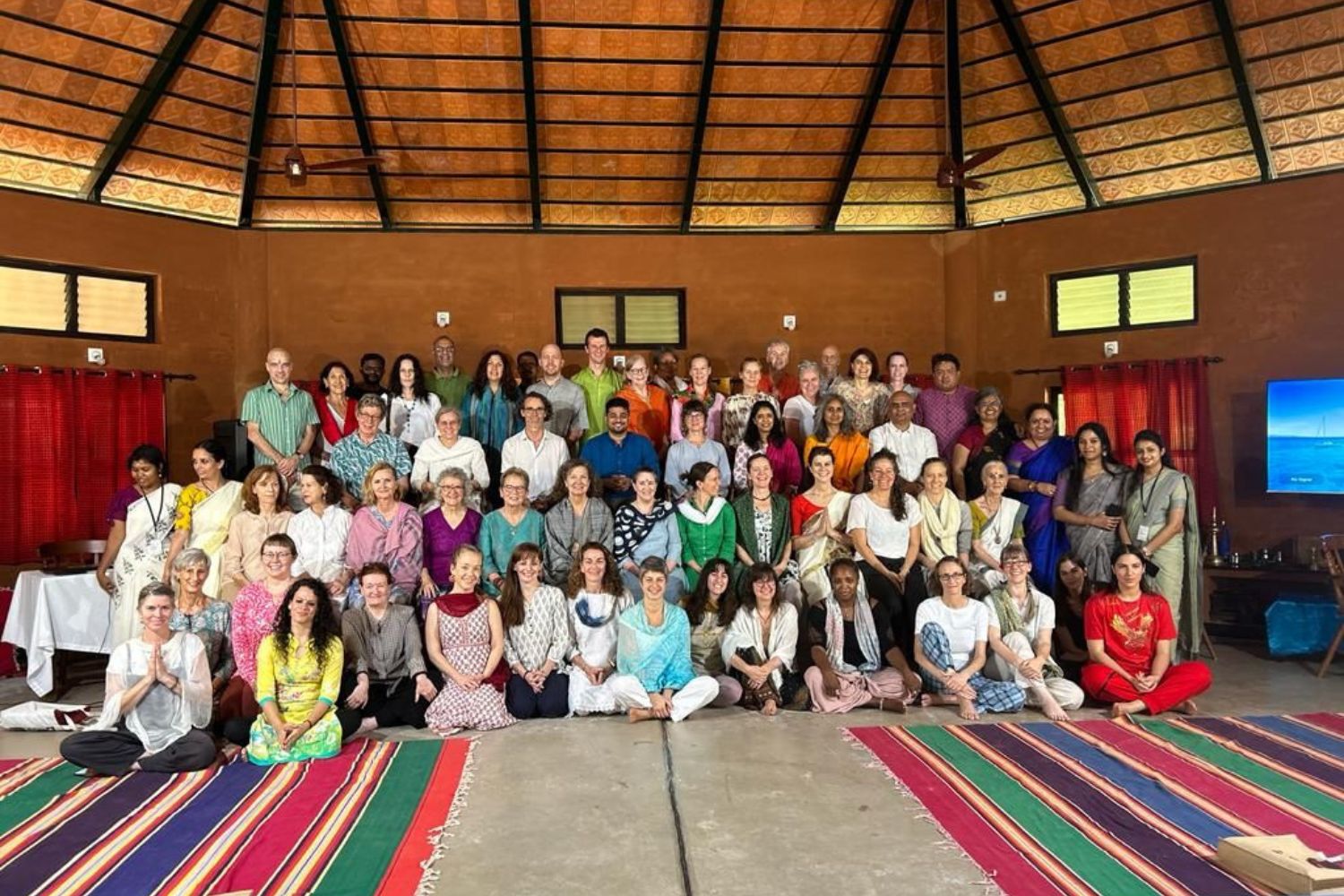The four vedas
The four vedas constitute four of the 14 sciences (vidyās). Together, they include a huge volume of ancient works based on the testimony of more than 400 ṛṣis– enlightened beings said to have cognized or received sounds, mantras and wisdom directly from the divine. Ṛṣi literally means, “seer” and the Vedas are considered to be śruti, literally, “that which is heard.” So the Vedas were seen and heard by enlightened beings who then transmitted them to us.
The Four Vedas are:
- ऋग्वेद ṛg veda –“praise”; the oldest, and largest of the four, dating from 1500-1200BCE, it is comprised of 10,552 mantras in praise of devatās, dedicated to bringing us closer to to illumination or truth. We can think of devatās as divine embodiments of natural laws or phenomenon, like fire.
- सामवेद sāma veda or sāmagāna–hymns; comprised of 1,875 verses; The oldest known musical tradition of India– about 3000 years old–it is almost extinct now. It consists of 90% of verses from the Ṛg-Veda set to different intonations and is used in slightly different ritual contexts. It could be considered as the root of music and dance traditions. Traditionally, one needs to be initiated into this practice in order to recite this.
- यजुर्वेद yajur veda– consists of two parts: the, “black” (kṛṣṇa) part that contains roughly 4000 verses and the, “bright” or, “white” (śukla) part that contains roughly 4,800 verses; prose mantras for ritual worship to support right action in life. About 3000 years old.
- अथर्ववेद, atharva veda–a compilation of atharvāṇas– procedures for harmonious relationship with nature in everyday life; largely consists of healing chants, chants for auspicious occasions, descriptions of the human body. About 6000 verses, it is about 3000 years old.
Each of the four Vedas (except atharva veda, which doesn’t include aranyaka) include 4 parts: the Saṃhitā –the oldest portion of the vedas, composed entirely of mantras; sometimes said to apply most to the first āśrama (life stage); the Brāhmaṇa–a compilation of prose texts that explains the meaning of the Saṃhitā and how to do yajña (sacrifice), applies most to the second āśrama (life stage); the Aranyakas, which explain the philosophy behind ritual, for the third āśrama; and the Upaniṣada, which contains the most mystical and philosophical sections, most reflective of the fourth āśrama. There are said to be 108 उपनिषद् Upaniṣads, but what is certainly true is that there are very many, that they are the most recent part of the Vedas and that they significantly contribute to the spiritual core of many spiritual traditions.
There can be a tendency to think that, the further we go back in time, the more spiritual life must have been, and we are simply degenerating as time progresses.
However, we could look at this in the opposite way too: that the Vedas were oriented towards making the external world more hospitable and, as time progressed, saints and seers focused increasingly more on more subtle realms, and transcending the grosser concerns.
It may be more accurate to understand the Vedas as a fulcrum between, and progenitor of, both gross and subtle concerns: From the latter part of the Vedas–the Upaniṣads– Vedānta and other progressively subtle traditions evolved. From the earlier parts of the Vedas arose the upavedas and vedāṅgas, that attend to the relatively grosser aspects of existence: more harmonious relationships with our planet, and healthier bodies.



